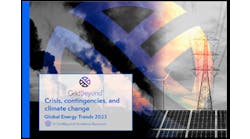Xcel Energy is launching a resiliency-as-a-service pilot for its commercial and industrial customers, with Xcel paying for 90% of the behind-the-meter microgrid costs upfront, getting paid back by the microgrid users over 10 years, and excluding the costs of the program from the rate base.
The Wisconsin Public Service Commission May 13 approved the plan (Docket 4220-TE-106), which involves commissioning customer microgrids that consist of numerous resources, said Deb Erwin, manager of regulatory policy for Xcel.
The issue of who pays for resiliency provided by utility microgrids is a thorny topic in the microgrid industry, with some arguing that microgrids can benefit all customers, especially if they provide resiliency, or are used as non-wires alternatives, or to reduce a utility’s peak demand.
Others argue that only those who receive backup power from a microgrid during outages should pay for them.
“We are pretty specific. The individual customer will pay for these assets. This is not a program with cross subsidization from other parts of our customer base,” said Erwin.
She added that Xcel Energy’s service territory is large, and it’s unlikely that customers in Lacrosse want to pay for microgrids in Ashland they won’t use.
One proposed project is for a new community center that would serve as a shelter in the event of a disaster. The behind-the-meter project would provide benefits to the customer that’s building the center, so only that customer would pay for it, said Erwin.
Residential customers aren’t included in the pilot because of the difficulty of deciding how to allocate costs, said Erwin. Residential projects would most likely involve neighborhoods.
This pilot focuses on one customer at a time.
“They know what they are getting and paying for. It’s fairly straightforward,” said Erwin.
Learn about how a utility in Lincoln, Nebraska, installed a cost-effective microgrid. View the Microgrid 2021 webinar: “How to Pay for Your Microgrid,” available for replay free of charge through June 3.
The pilot was sparked in part by customer demand for assets that meet both resiliency and sustainability goals.
Customers looking at the big picture
“We have a lot of customers in Wisconsin that we have talked to over a number of years who seemed like good candidates,” she said. They include organizations such as a wastewater treatment plant that now has a fossil fuel backup generator, health care facilities, government agencies and community centers.
“A lot of our largest customers are trying to look at the big picture and not just use solar for one goal, but multiple things at one time. If they’re thinking about adding solar, can we add a battery and accomplish their resiliency goals,” said Erwin.
Under the program, the customers must contribute at least 10% of the cost of the project, including design and engineering, and Xcel pays for the rest. The customer pays back Xcel under standard 10-year contracts, even if the assets have longer useful lives, she said.
Budget rises over five years
Xcel Energy has estimated that it will spend $1.7 million in 2021, $2.2 million in 2022, $3.4 million in 2023, $2.2 million in 2024, $3.4 million in 2025, and $4.4 million in 2026, said Erwin.
The company didn’t propose the pilot as an alternative to traditional distribution investments or planning or to pursue non-wires alternatives. The data and experience from the pilot may be valuable for evaluating non-wires alternatives in the future, Erwin said.
Xcel Energy expects the microgrids to consist of a number of resources, including existing diesel generation. Customers will have the option of using their microgrids to reduce their load during peak demand and cut demand charges, she said. They’ll also have the option of participating in any rate programs available, including interruptible rates and demand response programs.
The Wisconsin Public Service Commission’s approval May 13 called for the company to file an annual report with the commission that provides a list of projects in development, with estimated costs. The commission also asked for a pilot review in 2025 that identifies, among other issues, the frequency and duration of outages before and after the completion of each resiliency project, performance of the projects in island mode during outages and wholesale market data for any of the microgrids that participate in the ancillary services market.
Xcel also has microgrid program in Colorado
Earlier, Xcel Energy proposed seven microgrids in Colorado, at a cost to the utility of $23.4 million, chosen from a community resilience solicitation that the utility issued in May 2020.
The microgrids will serve the Denver International Airport Automated Guideway Transit System; National Western Center; Denver Rescue Mission’s Lawrence Street Community Center; City of Arvada Center for the Arts and Humanities; Town of Nederland Community Center; Summit County Middle School; and Alamosa Family Recreation Center.
Xcel was also a partner in the microgrid developed at the Panasonic headquarters in Denver.
As for the resiliency-as-a-service pilot, there’s a fair amount of interest already.
“What we’ve been seeing is that a lot of customers are interested in meeting their resiliency needs in a more sustainable way,” said Erwin.
Track news about Xcel Energy’s resiliency-as-a-service pilot. Subscribe to the free Microgrid Knowledge Newsletter.








